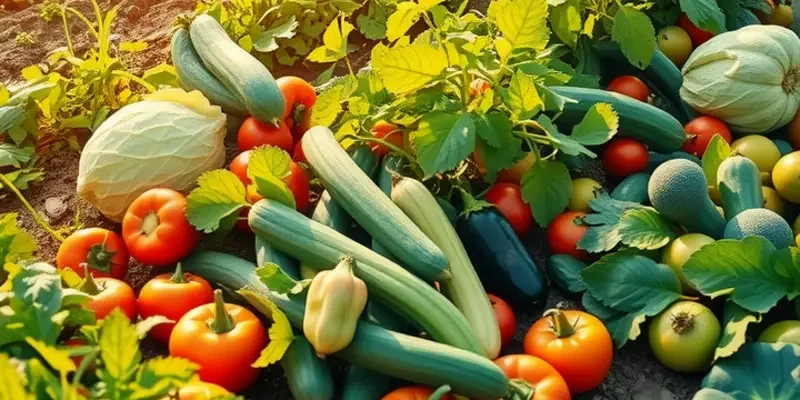Small kitchens present unique challenges when it comes to cooking and storing food. With limited space, effective food management practices become vital to ensure ingredients are used efficiently and waste is minimized. This guide offers practical storage solutions specifically aimed at enhancing the functionality of compact kitchens, making meal preparation easier and more enjoyable.
Vertical Solutions for Maximizing Space

When dealing with compact kitchens, utilizing vertical space is one of the most effective strategies for creating more room. By thinking vertically, you can reduce clutter and keep crucial ingredients and kitchenware within easy reach. Installing shelves can dramatically change how you store items like spices, dry goods, and even dishes. Consider placing adjustable shelving units on walls that are otherwise unoccupied. These can accommodate various sizes of containers and allow flexibility as your storage needs change.
Another great solution is the installation of racks. Racks are perfect for holding utensils, pots, and pans, which are often cumbersome and take up valuable counter or cabinet space. By mounting a sturdy rack near your cooking area, you free up horizontal space and ensure your tools are easily accessible. Opt for racks with hooks as these can be used to store mugs, ladles, and other items that often clutter drawers.
Magnetic strips offer another vertical storage alternative and can safely store knives and metal utensils. Simply attach a strip to a backsplash or inside a cabinet door to create instant access without using up drawer space. For non-magnetic items, installing hooks is a straightforward solution. These hooks can be placed on the underside of cabinets or attached to unused parts of your walls, providing additional hanging options for everything from measuring spoons to kitchen mitts.
The kitchen door itself is an often overlooked area for storage. By using over-the-door organizers, you can tuck away lighter items such as wraps, bags, and small snacks. This creates storage space where none existed before. Similarly, consider using the sides of your cabinets by installing slim shelving or pegboards for herbs and spices.
Vertical storage solutions not only help maximize space but also enhance food management practices by keeping items more organized. With better organization, you can optimize meal planning and reduce food waste (learn more about low-waste cooking prep), as shopping becomes more efficient. Knowing what you have and where it is stored can prevent unnecessary purchases and spoonfuls of expired ingredients.
Incorporating vertical solutions into your kitchen can transform it into a highly functional space without the need for drastic renovations. With the right arrangement of shelves, racks, and hooks, even the smallest kitchen can become a model of efficiency, emphasizing accessibility and minimizing clutter.
Smart Use of Containers and Bins

In the tight confines of a compact kitchen, every inch counts. One of the best ways to keep things organized is through clever container usage. Selecting the right containers ensures your food items remain accessible, fresh, and neatly stored.
Start with stackable bins to capitalize on vertical space inside your refrigerator and pantry. These bins come in various sizes and can be arranged to suit the specific dimensions of your storage area. By stacking them, you maximize storage potential while keeping items visible and easily accessible. Transparent bins are particularly effective, as they allow you to quickly identify contents without opening each one.
Labeled jars are another game-changer for optimizing space and minimizing confusion. Use clear glass or BPA-free plastic jars, labeling them with the contents and the date of storage. Clear jars help distinguish between similar-looking items such as flour, sugar, or various grains. Proper labeling not only aids in quick identification but also ensures older items are used first, reducing the likelihood of food waste.
Reusable bags play a crucial role in food storage for compact kitchens. Vacuum-sealed bags can compress the air out, extending the shelf life of perishables. Fabric or silicone bags are perfect for storing snacks, fruits, and vegetables. They can be washed and reused multiple times, contributing to a low-waste kitchen environment. Their flexible nature allows them to fill odd spaces that rigid containers can’t. When not in use, they can be flattened and stored away easily.
It’s essential to store sauces safely, to minimize food waste and mitigate potential spoilage. For more tips on sauce storage and safety, consider checking this link on safer storage of sauces.
While arranging containers, remember that the organization is part science, part art. Group similar items together—breakfast essentials, baking ingredients, or spices—creating natural zones within your storage areas. This method streamlines cooking processes and simplifies inventory checks, leading to more efficient ingredient use.
Finally, periodic re-evaluation of your storage system ensures continued efficiency. As seasons and cooking habits change, being adaptable with your container and bin arrangements can maintain order and accessibility over time. Clever container use in compact kitchens is more than just a matter of efficiency; it’s about creating a harmonious space where cooking becomes less of a chore and more of a joy.
Final words
Implementing these creative storage solutions can significantly improve the efficiency of your small kitchen. By focusing on vertical space and utilizing smart containers, you can create a streamlined area for food management that minimizes waste and maximizes usability. Regularly assess what you have on hand, rotate perishables, and label stored items to optimize your cooking experience. Small spaces can lead to big culinary delights with a little planning and creativity.







